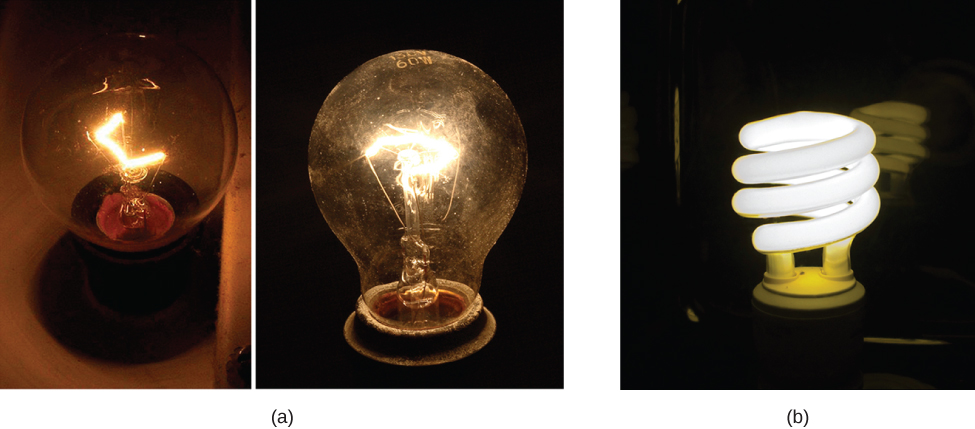| << Chapter < Page | Chapter >> Page > |
In an electric circuit, electrical energy is continuously converted into other forms of energy. For example, when a current flows in a conductor, electrical energy is converted into thermal energy within the conductor. The electrical field, supplied by the voltage source, accelerates the free electrons, increasing their kinetic energy for a short time. This increased kinetic energy is converted into thermal energy through collisions with the ions of the lattice structure of the conductor. In Work and Kinetic Energy , we defined power as the rate at which work is done by a force measured in watts. Power can also be defined as the rate at which energy is transferred. In this section, we discuss the time rate of energy transfer, or power, in an electric circuit.
Power is associated by many people with electricity. Power transmission lines might come to mind. We also think of light bulbs in terms of their power ratings in watts. What is the expression for electric power ?
Let us compare a 25-W bulb with a 60-W bulb ( [link] (a)). The 60-W bulb glows brighter than the 25-W bulb. Although it is not shown, a 60-W light bulb is also warmer than the 25-W bulb. The heat and light is produced by from the conversion of electrical energy. The kinetic energy lost by the electrons in collisions is converted into the internal energy of the conductor and radiation. How are voltage, current, and resistance related to electric power?

To calculate electric power, consider a voltage difference existing across a material ( [link] ). The electric potential is higher than the electric potential at , and the voltage difference is negative . As discussed in Electric Potential , an electrical field exists between the two potentials, which points from the higher potential to the lower potential. Recall that the electrical potential is defined as the potential energy per charge, , and the charge loses potential energy moving through the potential difference.

If the charge is positive, the charge experiences a force due to the electrical field . This force is necessary to keep the charge moving. This force does not act to accelerate the charge through the entire distance because of the interactions of the charge with atoms and free electrons in the material. The speed, and therefore the kinetic energy, of the charge do not increase during the entire trip across , and charge passing through area has the same drift velocity as the charge that passes through area . However, work is done on the charge, by the electrical field, which changes the potential energy. Since the change in the electrical potential difference is negative, the electrical field is found to be

Notification Switch
Would you like to follow the 'University physics volume 2' conversation and receive update notifications?